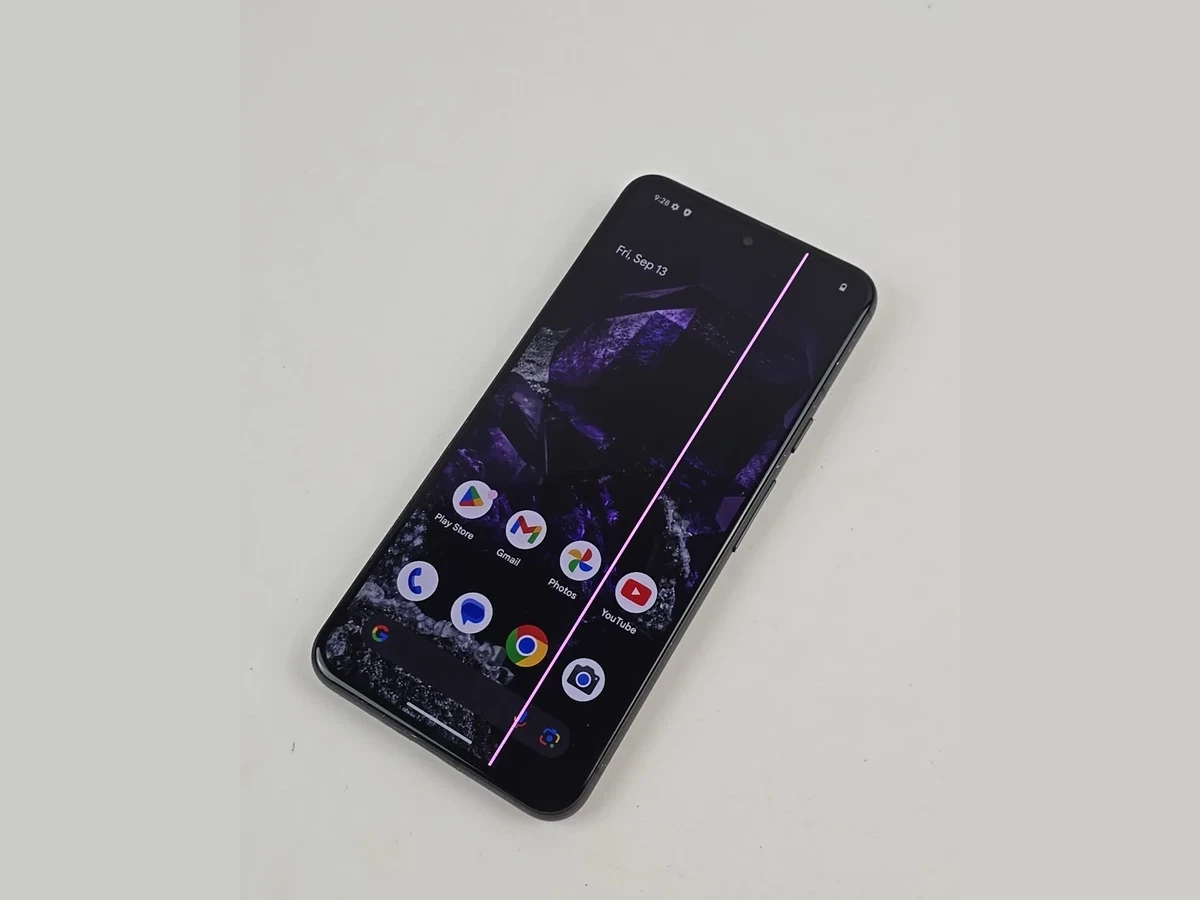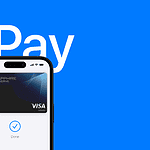Thinking about resetting your Android phone? Whether you’re selling your device, fixing problems, or just starting fresh, a factory reset can help. This process removes all your data and returns your phone to its original state. To factory reset your Android phone, go to Settings, find System or Backup options, select Factory Data Reset, and follow the on-screen instructions to complete the process.
Before you reset, remember to back up your important files. Photos, contacts, and app data will be erased during a reset. Many Android phones offer built-in backup tools that save your data to Google’s cloud services. Take a few minutes to ensure everything you value is safely stored elsewhere.
How to Reset an Android Phone to Factory Settings (2025)
Factory resetting your Android phone wipes all your data and returns it to its original, out-of-the-box state. Whether you’re selling your phone, fixing software issues, or starting fresh, a factory reset can be an effective solution.
⚠️ Warning: This process erases everything on your device—apps, photos, messages, and accounts. Make sure you back up important data before continuing.
🔄 Option 1: Factory Reset via Settings (Recommended)
This is the easiest and safest way to reset your phone.
Steps:
- Open the Settings app.
- Scroll down and tap System.
- Tap Reset options (or Backup & reset on some phones).
- Select Erase all data (factory reset).
- Review the list of accounts and apps that will be removed.
- Tap Erase all data.
- Confirm your PIN, pattern, or password.
- Tap Erase everything to begin.
Your phone will restart and begin the reset process, which can take several minutes.
On Samsung Galaxy Devices:
- Go to Settings → General management → Reset.
- Tap Factory data reset.
- Scroll down and tap Reset → Delete all.
- Enter your password or PIN if prompted.
🔐 Option 2: Reset Using Recovery Mode (If You Can’t Access Settings)
If your phone won’t boot or the screen is frozen, you can reset using Android’s built-in recovery mode.
Steps:
- Power off the device completely.
- Press and hold the Power + Volume Up buttons together (some models use Power + Volume Down or Power + Home).
- When the device logo appears, release the Power button but continue holding the Volume button until recovery mode appears.
- Use the volume buttons to navigate to Wipe data/factory reset.
- Press the Power button to select.
- Confirm by selecting Yes.
- After the reset, select Reboot system now.
Your phone will restart and go through the initial setup screen.
☁️ Before You Reset: Back Up Your Data
To avoid losing important data:
- Google Account: Go to Settings → Google → Backup → Turn on “Back up to Google One.”
- Photos: Use Google Photos or another cloud app.
- Messages: Use SMS Backup & Restore if you want to save text messages.
- Files: Transfer files to Google Drive or an external storage device.
📵 What a Factory Reset Removes
- Google accounts and other synced accounts
- App data, downloaded apps, and settings
- Photos, videos, and personal files stored locally
- System settings and preferences
- Call logs, SMS, and saved Wi-Fi networks
The phone will be like new when it restarts—ready to set up from scratch or hand off to someone else.
🔐 Don’t Forget Factory Reset Protection (FRP)
If your phone has a Google account signed in, FRP (Factory Reset Protection) will require you to log in with that account after reset. This is a security measure to deter theft.
Before selling or giving away your phone:
- Go to Settings → Accounts
- Tap your Google account and select Remove account
This ensures the next person can set up the device without issues.
A factory reset can solve persistent bugs, performance slowdowns, or prepare your phone for resale. Just be sure you’ve backed up your info and removed your accounts before wiping it clean.
Key Takeaways
- Factory resetting removes all personal data and returns your Android phone to its original state.
- Always back up important files, photos, and contacts before starting the reset process.
- You can reset your Android through the Settings menu or by using hardware buttons if your phone is locked or unresponsive.
Understanding Factory Reset
A factory reset returns your Android device to its original state by removing all personal data, apps, and settings. This process helps solve various problems and prepares phones for resale.
The Difference Between Hard Reset and Factory Reset
People often mix up the terms “hard reset” and “factory reset,” but they’re slightly different. A hard reset typically refers to forcing your device to restart using hardware buttons when it freezes.
A factory reset is more thorough. It completely wipes all data and returns the phone to its original state. This process is also sometimes called “formatting” or “factory data reset” in your device settings.
Hard resets don’t erase your data, while factory resets delete everything. Think of a hard reset like restarting your computer when it freezes. A factory reset is more like reinstalling the entire operating system.
Most Android phones let you do a factory reset through settings or through recovery mode by selecting “wipe data/factory reset” option.
What Happens During a Factory Reset?
When you factory reset Android, several important things happen to your device:
- All user data is erased – photos, videos, music, documents
- All downloaded apps are removed
- All settings return to defaults
- All accounts are disconnected
The process takes about 10-15 minutes to complete. Your phone will restart several times during this process. After it finishes, you’ll see the setup screen just like when the phone was new.
It’s important to know that a standard factory reset might not completely erase all data. Some information can still be recovered with special tools. For maximum security when selling your phone, experts recommend encrypting your device before doing a factory reset.
Pre-Reset Preparations
Before resetting your Android phone, taking specific steps will ensure your data remains safe and the reset process goes smoothly. Proper preparation helps prevent data loss and makes setting up your new phone easier.
Backing Up Your Data
Backing up your data is the most critical step before any factory reset. Android offers several ways to save your important information.
First, back up user data to avoid losing photos, contacts, and messages. Open Settings, tap System, then Backup, and make sure the toggle is on.
For photos and videos, use Google Photos. Install the app if you don’t have it, open it, and tap your profile picture. Select “Photos settings” then “Backup” and turn it on.
Don’t forget about your WhatsApp chats, documents, and downloaded files. WhatsApp has its own backup feature in Settings. For documents and downloads, copy them to Google Drive or your computer.
Music and apps will need special attention too. Music can be uploaded to YouTube Music, while apps will reinstall automatically if they’re backed up through your Google account.
Syncing with Your Google Account
Your Google account is essential for a smooth reset process. It stores passwords, contacts, and app data.
Check that your account is properly synced:
- Go to Settings
- Tap on Accounts (or Users & Accounts)
- Select your Google account
- Make sure all sync options are turned on
- Tap “Sync now” to force an immediate sync
Wait a few minutes for the sync to complete. This ensures your contacts, calendar events, and app data are safely stored in the cloud.
For added security, verify your Google account password and recovery information. You’ll need this to sign back in after the reset.
Double-check that your Google Authenticator codes or other two-factor authentication methods are accessible outside your phone.
Removing Screen Locks and Security Patterns
Removing screen lock is often overlooked but very important. Factory reset requires your PIN, pattern, or password.
To remove security locks:
- Open Settings
- Tap Security (or Lock Screen)
- Select Screen Lock
- Enter your current security method
- Choose “None” to remove all security
If you skip this step, you might need your Google account info for verification after the reset. This is part of Android’s Factory Reset Protection.
Make sure you know the PIN or password for any encrypted storage on your device. Without it, some data might remain inaccessible even after setting up your phone again.
Write down your current pattern or PIN somewhere safe in case you need it during the reset process.
Using System Settings to Reset Your Android Phone
Resetting your Android phone through system settings is the most common and straightforward method. This process allows you to erase all data and restore your device to its original factory state without needing special codes or recovery mode.
Step-by-Step Guide to Reset via Settings
To begin the factory reset process, first back up your important data. Photos, contacts, and other files will be permanently deleted during reset.
Open the Settings app on your Android phone. This app usually has a gear icon and can be found in your app drawer or notification panel.
Look for the “System” option. On some Android devices, you might need to tap “General Management” or scroll down to find similar options. The exact menu names can vary between phone brands like Samsung, Google Pixel, or other Android devices.
Within the System menu, find and tap on “Reset options” or “Backup and reset.” This section contains various reset options for your device.
If prompted, enter your PIN, pattern, or password to continue. This security step prevents unauthorized resets of your phone.
Selecting the Factory Reset Option
Once in the reset menu, you’ll see several options. Look for “Factory data reset” or “Erase all data (factory reset)” and tap on it.
This option will completely wipe your device and return it to factory settings. Other reset options might only affect network settings or app preferences.
Your phone will show a list of accounts you’re signed into and what data will be erased. This includes downloaded apps, photos, music, and all personal data stored on the internal storage.
External storage like SD cards may not be erased automatically. If you want to clear everything, check the option to erase SD card data if available.
Confirming the Reset and Erasing Data
Read the warning message carefully. It explains that all data will be permanently deleted from your device’s internal storage.
To proceed, tap the “Reset Phone” or “Erase Everything” button at the bottom of the screen. Some devices might ask you to tap this button twice for confirmation.
Enter your PIN, pattern, or password again if prompted. This final security check ensures that only authorized users can reset the device.
Your phone will restart and begin the reset process. This typically takes 5-10 minutes to complete. Do not interrupt this process by removing the battery or powering off the device.
After resetting, your phone will restart and display the setup screen like when it was new. You can now set up your device from scratch or restore a backup if you created one.
Using Hardware Keys for Factory Reset
When your phone’s screen is unresponsive or you can’t access settings normally, hardware keys provide a reliable way to reset your device. This method works even when your phone won’t boot up properly or the touchscreen fails.
Accessing the System Recovery Screen
To enter the recovery mode, you’ll need to use a specific combination of hardware buttons. First, power off your phone completely. For most Android devices, press and hold the Power button and Volume Up key simultaneously for about 10-15 seconds. Some models might require Power + Volume Down instead.
Keep holding until you see the manufacturer’s logo appear. Once you see this logo, release the Power button but continue holding the Volume button. After a few seconds, the system recovery screen will appear.
If this method doesn’t work, try the alternative combination. Different phone brands use different key combinations:
- Samsung: Power + Volume Up + Home (older models)
- Google Pixel: Power + Volume Down
- Most other Android phones: Power + Volume Up
Navigating the Recovery Menu
The recovery screen doesn’t support touch input. Instead, use the Volume buttons to move up and down through menu options. The Volume Up key moves the selection upward, while Volume Down moves it downward.
The Power button acts as the “select” or “enter” key. When you’ve highlighted your desired option, press the Power button once to select it.
Look for options like “Wipe data/factory reset” or simply “Factory reset” in the menu. Use the Volume keys to highlight this option. The text might appear in white or yellow against a black background, making it easy to see which option is currently selected.
Performing the Reset with Hardware Buttons
Once you’ve selected the “Factory reset” option by pressing the Power button, a warning message will appear. This message warns that all data will be erased. Use the Volume buttons to navigate to “Yes” or “Yes – delete all user data.”
Press the Power button to confirm your choice. The reset process will begin immediately and typically takes 2-5 minutes to complete. Your phone will show a progress bar or percentage during this time.
When finished, you’ll see an option that says “Reboot system now.” Select this with the Power button, and your phone will restart in its factory state. This process completely removes all your personal data, accounts, downloaded apps, and settings.
Remember that once you perform a factory reset, there’s no way to recover the data unless you’ve backed it up beforehand.
Resetting When Locked Out of the Device
Getting locked out of your Android phone can be frustrating, but several methods exist to regain access without losing your data. These approaches use different Google services and built-in Android features to help you reset your device when you can’t remember your password, pattern, or PIN.
Using Google’s Find My Device Service
Google’s Find My Device is a powerful tool for accessing locked Android phones. To use this service, visit the Find My Device website from any computer or another mobile device. Sign in with the Google account linked to your locked phone.
Once signed in, your Android device will appear on the screen. Select it and choose the “Erase Device” option. This action will factory reset your Android phone remotely.
Remember that your phone must be:
- Turned on
- Connected to the internet
- Signed in to a Google account
- Visible on Google Play
This method works even when you can’t physically access your device’s settings menu.
Utilizing Forgot Pattern Feature
Many Android phones offer a built-in “Forgot Pattern” option directly on the lock screen. After entering an incorrect pattern or PIN several times, look for the “Forgot Pattern” button at the bottom of the screen.
When you tap this option, you’ll be asked to enter the Google account credentials associated with the phone. This serves as identity verification.
After successful verification, you can:
- Create a new pattern, PIN, or password
- Access your device without a full reset
This method helps you avoid a complete factory reset when you simply forgot your unlock pattern. It works best on older Android versions, as newer ones might require additional steps.
Leveraging Android Device Manager
Android Device Manager (now part of Find My Device) offers another way to reset a locked phone. This tool works through your Google account and can be accessed from any web browser.
To use it:
- Go to the Android Device Manager website
- Sign in with your Google account
- Select your locked device
- Choose “Lock” option
- Set a temporary password
- Use this password to unlock your device
If that doesn’t work, you can select the erase option to factory reset your phone. Be aware that after a factory reset with Factory Reset Protection enabled, you’ll need to provide the Google account credentials previously used on the device.
This prevents thieves from using factory resets to bypass security on stolen phones.
After the Reset
Once your factory reset is complete, you’ll need to set up your phone again, restore important data, and sign back into your accounts. This process helps you get your device back to a usable state with your personal information.
Setting Up Your Android Phone Anew
After your phone restarts, you’ll see the initial setup screen. This works just like when you first bought your phone. You’ll need to:
- Select your language and region
- Connect to a Wi-Fi network
- Accept the terms and conditions
- Choose privacy settings
The setup wizard will guide you through each step. It’s important to connect your phone to Wi-Fi to download updates and restore your apps.
If you’re setting up a Samsung device, the process might look slightly different. Samsung phones may ask about Samsung account details in addition to Google account information.
Take your time with this process. Rushing might cause you to miss important settings that affect your privacy and how your phone works.
Restoring Your Data
If you backed up your phone before the reset, now is the time to restore that data. During setup, you’ll see an option to restore from a backup.
Your options typically include:
- Google Drive backup: Restores apps, app data, settings, and more
- Samsung account backup: For Samsung devices
- Computer backup: If you backed up to a PC
Not all apps automatically restore their data. Some apps may require you to log in again or manually restore settings.
Photos and videos usually need to be downloaded again from Google Photos if you had backup enabled. This might take time depending on how many files you have and your internet speed.
Music, documents, and other files will need to be downloaded from their respective cloud services or transferred from your computer.
Re-entering Google Account Details
Adding your Google account is one of the most important steps. This allows you to:
- Download your previously purchased apps from the Play Store
- Access Gmail, Google Photos, and other Google services
- Sync your contacts, calendar, and other data
Enter the same Google account you used before the factory reset. If you use multiple accounts, add your main one first, then add others later in Settings.
Your phone might ask you to verify your identity through a security check. This could be a code sent to a recovery email or phone number.
After adding your account, the Play Store will begin downloading your apps automatically. You can choose which apps to reinstall by going to the Play Store, tapping your profile icon, and selecting “Manage apps & device.”
Additional Tips and Considerations
Before resetting your Android device, take time to understand compatibility issues, manufacturer differences, and security concerns. These factors can affect how smooth your reset process will be and help protect your data.
Ensuring Device Compatibility
Not all Android devices reset the same way. Older Android versions (8.0 and below) might have different reset paths than newer ones. Check if your device has enough battery—at least 50% is recommended for a safe reset process.
Some devices require removing screen locks before resetting. If you have a Google account linked to your phone, have your login details ready for after the reset.
External SD cards might not be affected by factory resets. Remove them beforehand if you want their data erased too. If your phone has carrier locks or enterprise policies, these might limit reset options.
Phones with custom ROMs may need special steps. Check your device forums for specific instructions if you’ve modified your Android system.
Understanding Manufacturer-Specific Steps
Samsung devices have unique reset procedures. You’ll need to navigate to Settings > General management > Reset > Factory data reset on most Samsung phones. Samsung account verification may be required after resetting.
Google Pixel phones use a different path: Settings > System > Reset options > Erase all data. Motorola devices typically use Settings > System > Reset.
Some manufacturers add extra verification steps. Xiaomi requires Mi Account verification, while Huawei needs your Huawei ID. OnePlus devices might ask for your pattern/PIN twice during the process.
Many newer phones offer reset options through recovery mode. This is useful if your phone won’t boot normally. Access methods vary—Samsung uses Volume Up + Power while Pixel uses Volume Down + Power.
Considering Security and Privacy
Factory resets don’t completely erase all data. Some personal information might remain on the internal storage. For complete security, consider encrypting your device before resetting.
Turn off Find My Device and remove your Google account before resetting. This prevents activation lock issues later. If selling your phone, use a secure erase app after the factory reset for extra protection.
Keep these important items backed up:
- SMS messages and call logs
- Photos and videos
- Documents and downloads
- App data and settings
- Contacts and calendar entries
Two-factor authentication apps need special attention. Save backup codes or temporarily switch to alternate methods before resetting. Remember that resetting removes all security updates—update your device immediately after setup.
Frequently Asked Questions
Android phones offer several ways to perform factory resets depending on your situation. These methods work for locked devices, through settings menus, or using hardware buttons when your phone won’t respond.
What is the procedure for performing a hard factory reset on an Android device using hardware buttons?
When your Android device won’t turn on properly, you can use hardware buttons to reset it. First, power off your device completely.
Press and hold the Volume Up and Power buttons at the same time for about 10-15 seconds. On some models, you might need to press Volume Up + Volume Down + Power buttons together.
Once the recovery menu appears, use volume buttons to navigate to “Wipe data/factory reset” and press the power button to select it. Confirm your choice and the reset will begin.
How can one restore a Samsung Android phone to its initial factory settings?
Samsung phones have a specific path for factory resets. Open the Settings app on your Samsung device.
Navigate to “General management” and tap on “Reset” or “Reset options.” Select Factory data reset.
Review the information about data deletion, then tap “Reset” or “Reset device.” You may need to enter your PIN or password to confirm the action.
What are the steps to reset an Android phone’s settings without the unlock password?
If you’ve forgotten your unlock password, you can still reset your phone. Turn off your device completely.
Boot into recovery mode by pressing and holding the Power and Volume Up buttons (this combination may vary by model). When the Android recovery screen appears, use volume buttons to select “Wipe data/factory reset.”
Press the Power button to confirm and follow the on-screen instructions to complete the reset process.
How can I wipe all data on my locked Android smartphone and return it to factory defaults?
For locked devices, you can use Google’s Find My Device feature. Visit the Find My Device website on a computer and sign in with the Google account linked to your phone.
Select your locked device, then choose the “Erase Device” option. This will remotely trigger a factory reset, erasing all data on the phone.
Alternatively, boot into recovery mode using hardware buttons as described earlier and select the factory reset option.
Is there a way to perform a factory reset on an Android phone directly from the settings menu?
Yes, this is the most straightforward method. Open your phone’s Settings app and scroll down to find “System.”
Tap on “System,” then select Reset options. Choose “Erase all data (factory reset)” from the menu.
Review the warning about data deletion, then tap “Reset Phone” or “Reset Device.” Enter your PIN if prompted, and confirm to start the process.
Can you provide guidance on conducting a factory reset for an Android device that is unresponsive?
For unresponsive devices, first try a forced restart by pressing and holding the Power button for 10-15 seconds. If that doesn’t work, proceed with a hardware button reset.
Make sure your device has enough battery (at least 20%) or connect it to a charger. Press and hold the Volume Up + Power buttons (or your model’s specific combination) until the recovery menu appears.
Use volume buttons to navigate to “Wipe data/factory reset” and press the Power button to select. Confirm your choice and wait for the process to complete before restarting your device.







